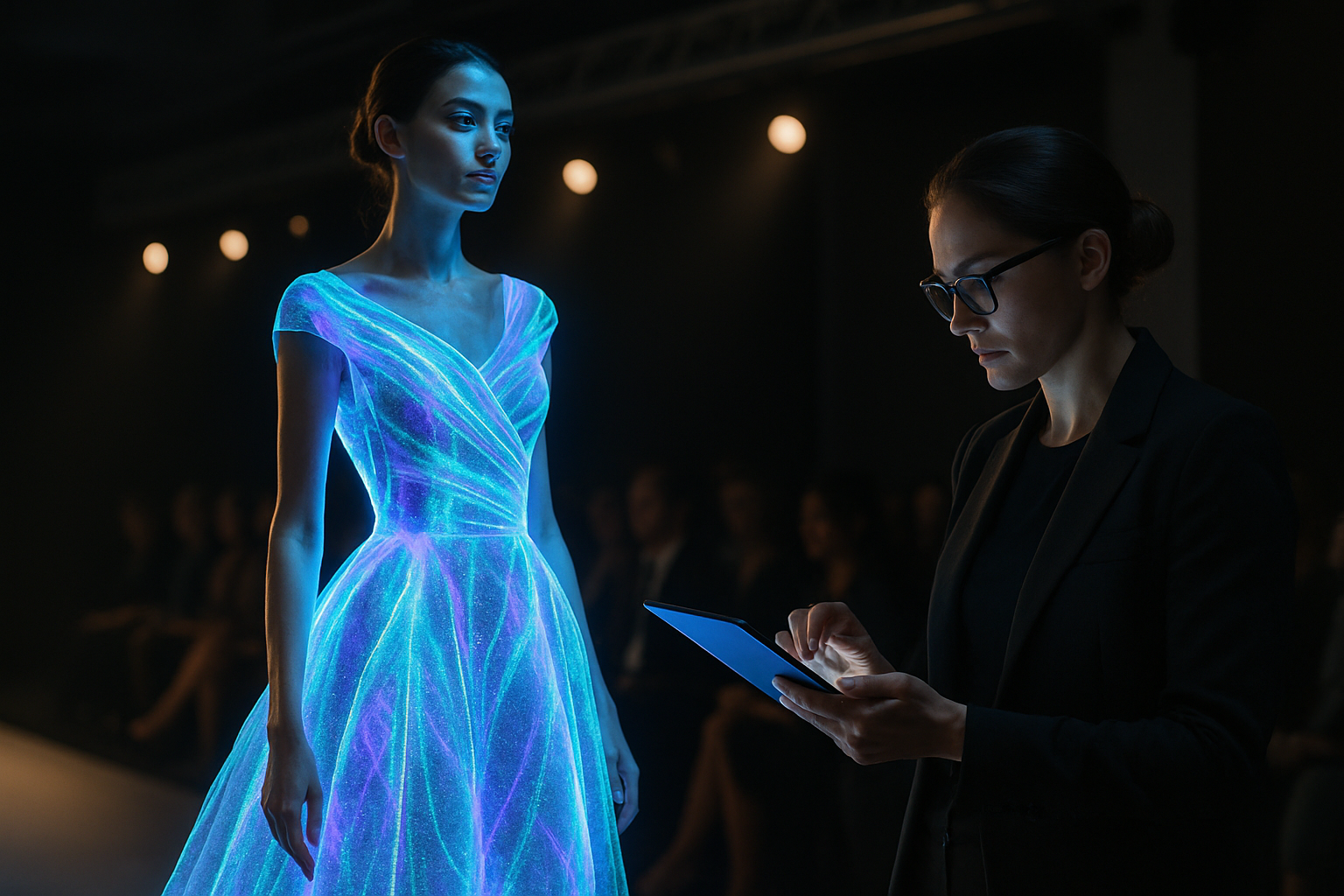Holographic Haute Couture: Fashion's Digital Frontier
In a world where technology and fashion increasingly intertwine, holographic haute couture emerges as a groundbreaking fusion of digital artistry and sartorial elegance. This cutting-edge trend is reshaping runway shows, redefining wearable art, and challenging our perceptions of clothing in the digital age. As designers embrace the limitless possibilities of light and projection, a new era of fashion unfolds before our eyes, blurring the lines between the tangible and the virtual.

Pioneers of Projection Couture
At the forefront of this movement are visionary designers who have embraced the potential of holographic technology. Hussein Chalayan, known for his avant-garde approach, was among the first to incorporate projections into his runway shows, creating ethereal displays that transformed models into living canvases. Similarly, Iris van Herpen’s collaborations with digital artists have produced otherworldly creations that seem to defy the laws of physics, with patterns and textures that shift and morph in real-time.
The Technology Behind the Magic
The creation of holographic haute couture involves a complex interplay of cutting-edge technologies. High-powered projectors, motion-tracking sensors, and specialized software work in concert to map digital designs onto physical garments or directly onto models’ bodies. This process, known as projection mapping, allows for the seamless integration of digital elements with physical forms, creating a mesmerizing visual spectacle.
Beyond the Runway: Wearable Holograms
While holographic fashion has made its most dramatic impact on the runway, innovators are working to bring this technology into everyday life. Startups and established tech companies are developing wearable holographic displays that can be integrated into clothing and accessories. These devices promise to transform personal style into an interactive, customizable experience, allowing wearers to change their appearance with the touch of a button.
The Cultural Impact of Digital Dress
Holographic haute couture is more than just a technological marvel; it represents a significant shift in how we perceive and interact with fashion. As digital and physical realities continue to merge, questions of identity, self-expression, and the nature of clothing itself are being reimagined. This new frontier challenges traditional notions of materiality and ownership, paving the way for a future where our wardrobes may exist as much in the cloud as in our closets.
Sustainability and the Virtual Wardrobe
One of the most intriguing aspects of holographic fashion is its potential to address sustainability concerns in the industry. By creating virtual garments that can be projected onto basic, reusable pieces, designers can offer endless variety without the environmental impact of traditional manufacturing. This concept of a digital wardrobe could revolutionize consumption patterns, reducing waste while still satisfying the human desire for novelty and self-expression.
Challenges and Criticisms
Despite its potential, holographic haute couture faces several challenges. Critics argue that the technology is still too cumbersome and expensive for widespread adoption, limiting its appeal to high-end fashion houses and special events. There are also concerns about the energy consumption of projection systems and the potential for digital fashion to exacerbate issues of body image and unrealistic beauty standards.
The Future of Fashion in Light
As technology continues to advance, the possibilities for holographic haute couture seem boundless. From interactive garments that respond to the wearer’s emotions to augmented reality fashion shows accessible from anywhere in the world, the fusion of fashion and technology promises to transform not only what we wear but how we experience and interact with clothing. The next decade will likely see this trend move from the realm of experimental art into more mainstream applications, challenging designers, technologists, and consumers alike to reimagine the very fabric of fashion.





